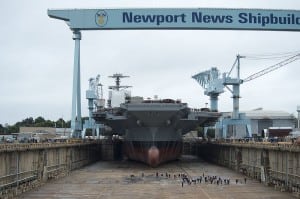
Navy officials confirmed on Thursday that the target date for the inaugural deployment of the first Ford-class carrier has been pushed off two years from 2019 to 2021 as a result of shock trials.Shock tests for USS Gerald R. Ford (CVN-78) are scheduled for 2019, said Rear Adm. Thomas Moore, program executive officer for carriers. While it typically takes only four months to set up, execute and recover from a shock test--which evaluates the ship’s ability to withstand combat by…













